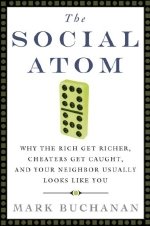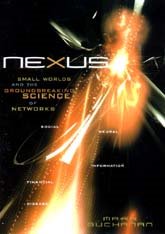Ideas from a meeting on Complex Networks, 2-6 July, Sardinia, Italy
Andrei Broder, vice-president of emerging search technology at Yahoo, gave a nice talk this morning on the nature of web advertising and where it's going. It seems that network science is likely to play an influential role -- supporting the emergence of a powerful version of "algorithmic" advertising -- just as it has in web search.
Classic advertising, Broder pointed out, tends to work either by building image and brand -- counting on long-term allegience from consumers -- or by making more specific appeals to "act now" (say, by offering discount coupons). You find these all over the web, of course, as in ordinary print media or television, but what's different in the web is the incredible speed and volume. Whereas advertisers used to do surveys and think hard about where to place what kind of ad, increasingly the approach has to be algorithmic -- you need software to make decisions and place ads on a second-by-second basis, and to adapt rapidly to how consumers respond.
Learning to do this well (effectively bringing customers into contact with ads for things they realy want) is a big challenge, and systems today make lots of mistakes. Broder mentioned, for example, a recent New York Times article on the Lewis Libby affair, where ads showed up on the page for Libby Shoes, not exactly the connection for which the advertisers were presumably hoping. How to do this better? Broder suggests that a sophisticated mathematical/computational approach using complex network science may be the solution.
Web search was revolutionized by the PageRank algorithm, which makes vclculations on the entire network of linked pages in order to assign an "importance" to any one page. In the case of advertising, you can imagine an abstract network, where the links correspond to a trio of 1) user (the consumer), 2) the context (the web page) and 3) the advertisement. Based on historical data (which a company like Yahoo! can collect at the level of something like 10^12 points) you can (in principle) build this graph, adding edges for each trio where something positive happened (a click through). Then use this data, and do network analysis to try to predict other trios where you're likely to find success again.
I'm sure this kind of work will yield results pretty quickly, and I bet those Libby Shoes ads start finding more relevant outlets. The interesting thing, to me at least, is how rapidly the (online) advertising community has become quite sophisticated in a mathematical sense. This community has been taken over and driven by computer scientists, physicists and mathematicians -- but it also depends for success on a really new interaction between scientific disciplines, qhich is the only way to get the mathematics and algorithms to interact successfully with human psychological habits.
Thursday, July 5, 2007
A network future for web advertising
Subscribe to:
Post Comments (Atom)




3 comments:
Well written article.
Hey, just want to say hi. I'm new here.
Agree with Neena, it is well put together post, very interesting and useful information.
Post a Comment